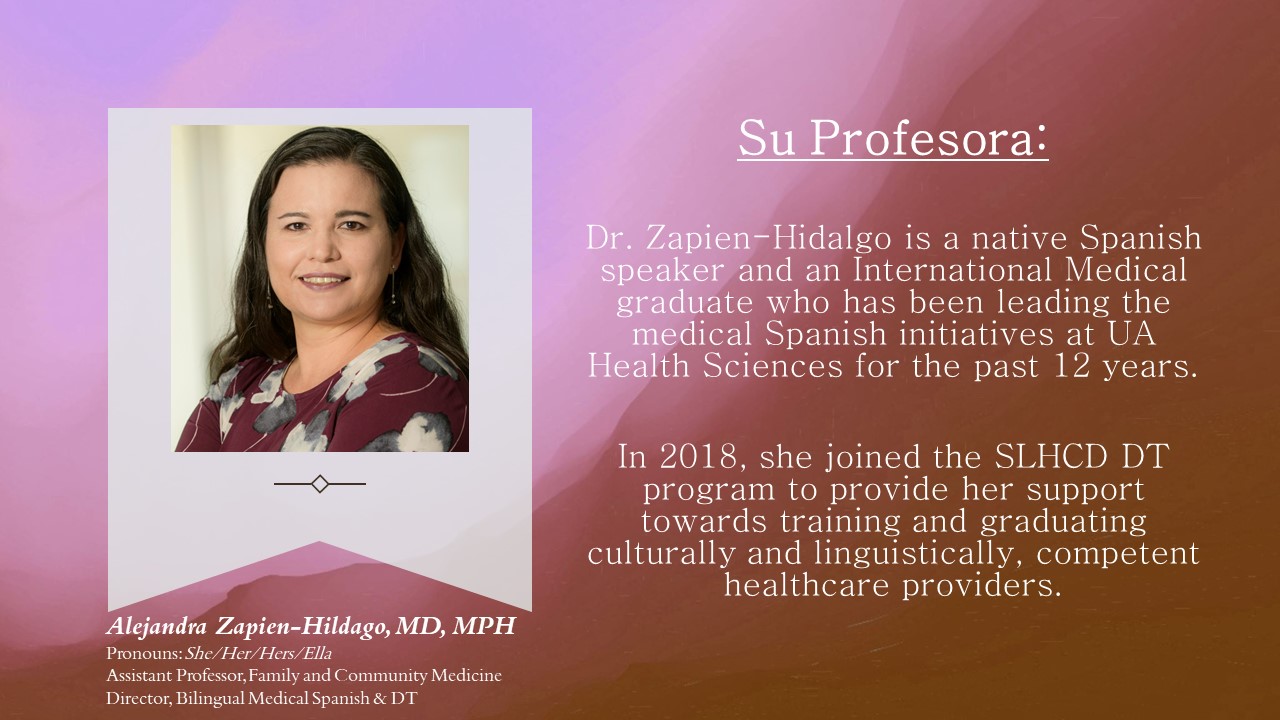Spanish Language Health Care Disparities Distinction Track
The application for the 2024-2025 cohort has closed. Applications for the 2025-2026 cohort will reopen for in early Spring 2025.
Please reach out to Auralia Walls at abw2@arizona.edu with any questions.
About the Spanish Language Health Care Disparities Distinction Track (SLHCD DT)
This 2-year track focuses on strengthening the skills of intermediate and advanced Spanish speaking residents to provide enhanced care to a large Spanish speaking patient population as well as developing projects to educate themselves and fellow residents in cultural competency and health care disparities.
Health Care Disparities (HCD) Education has become a critical part of training medical providers to care for diverse populations. According to the Department of Health and Human Services, “individuals, families, and communities that have systematically experienced social and economic disadvantage face greater obstacles to optimal health”. In recognition of the impact health care disparities have on quality of care, the ACGME has required that residents, fellows and faculty be educated in reducing health care disparities and that they be engaged in institutional initiatives to do the same.
Program Curriculum
- Twice-monthly, one-hour facilitated advanced Spanish classes featuring interactive, systems based Spanish curriculum.
- Participants will be required to organize at least one Health Care Disparities Forum in their first year of the track.
- Participants will have the opportunity to volunteer at a local medical facility that primarily provides care to Spanish Speaking Patients.
- At the close of the two years, participants will take the Clinician Cultural and Linguistic Assessment (CCLA). Upon passing the assessment, participants will have the opportunity to become Certified Bilingual Providers.
Spanish Proficiency Guidelines for Speaking:
Novice: Language consists primarily of short and sometimes incomplete sentences in the present and may be hesitant or inaccurate. Conversation is restricted to a few predictable topics necessary for survival in the target language culture, such as basic personal information, basic objects, and a limited number of activities, preferences, and immediate needs.
Intermediate: Language expresses personal meaning, in part by combining and recombining known elements and conversational input to produce responses typically consisting of sentences and strings of sentences. Ability to use past tense.
Advanced: Language demonstrates the ability to narrate and describe in the major time frames of past, present, and future by providing a full account. Narration and description tend to be combined and interwoven to relate relevant and supporting facts in connected, paragraph-length discourse. Intended message is conveyed without misrepresentation or confusion.
SLHCD DT Brochure: slhcd_brochure_2024_1.pdf


